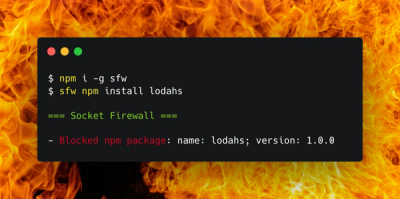
Security News
Package Maintainers Call for Improvements to GitHub’s New npm Security Plan
Maintainers back GitHub’s npm security overhaul but raise concerns about CI/CD workflows, enterprise support, and token management.
Bosco is a utility knife to help manage the complexity that using microservices, which naturally results in a large number of code repositories, brings with it. Inspired by the Github 'setup', e.g. can a developer run one simple command and get up and running?
Docs: https://bosco.readme.io/v0.4.0/docs/what-is-bosco
Please refer to the bosco documentation here https://github.com/tes/bosco, you can use this package to push assets to s3 using continuous integration without having to depend on the entire bosco.
Commands in Bosco are defined via specific command files within the 'commands' folder: https://github.com/tes/bosco/tree/master/commands.
To get help on any command just type;
bosco-s3 help s3push
You can use a number of parameters to control the behaviour of Bosco. Parameters are configuration options that can be used across commands.
| parameter | description | default |
|---|---|---|
| -e, --environment | Environment name | local |
| -b, --build | Build number or tag | default |
| -c, --configFile | Config file | ~/.bosco/bosco.json |
| -p, --configPath | Config path | ~/.bosco/bosco.json |
| -n, --noprompt | Do not prompt for confirmation | false |
| -f, --force | Force over ride of any files | false |
| -s, --service | Inside single service | false |
| --nocache | Ignore local cache for github projects | false |
| --offline | Ignore expired cache of remote service data and use local if available | false |
To see all possible commands and parameters, just type 'bosco'.
This will create bundles for front end assets (JS, CSS, Templates), this command can be run across repositories in a workspace, but it is typically run within a single service (hence the -s parameter below) by a build server that dynamically assigns a build number.
bosco-s3 s3push -s -e <environment> -b <buildnumber>
This command requires that you have configured your AWS details for S3. Best to put these into a .bosco folder in the project workspace a per environment config, e.g. .bosco/tes.json.
{
"aws": {
"key": "XXXXXX",
"secret": "XXXXXX",
"bucket": "bucket-name",
"region": "eu-west-1",
"cdn": "https://dudu89lpwit3y.cloudfront.net"
}
}
To then access the html fragments for compoxure, it follows a simple convention:
<cdn>/<environment>/<build>/<type>/<bundle>.<fragmentType>.<js|css|html|map|txt>
For example:
This would contain a fragment that has script a tag for all of the minified JS tagged in the bottom group.
FAQs
Bosco s3 will take care of pushing assets to s3
The npm package bosco-s3 receives a total of 2 weekly downloads. As such, bosco-s3 popularity was classified as not popular.
We found that bosco-s3 demonstrated a not healthy version release cadence and project activity because the last version was released a year ago. It has 1 open source maintainer collaborating on the project.
Did you know?

Socket for GitHub automatically highlights issues in each pull request and monitors the health of all your open source dependencies. Discover the contents of your packages and block harmful activity before you install or update your dependencies.

Security News
Maintainers back GitHub’s npm security overhaul but raise concerns about CI/CD workflows, enterprise support, and token management.

Product
Socket Firewall is a free tool that blocks malicious packages at install time, giving developers proactive protection against rising supply chain attacks.

Research
Socket uncovers malicious Rust crates impersonating fast_log to steal Solana and Ethereum wallet keys from source code.